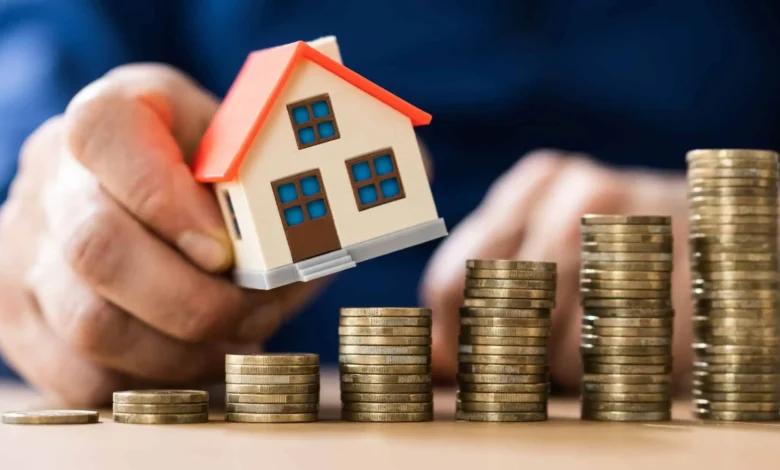5 Surprising Things That Can Affect Your Property Valuation Report

That all-important property valuation can sometimes throw up a few surprises when selling your home. While most of us know that location, size, and condition play crucial roles in determining property value, there are several less obvious factors that chartered surveyors take into account when preparing valuation reports. These unexpected elements can significantly impact your property’s market value—sometimes by thousands of pounds.
Let’s dive into five surprising things that might be affecting your property valuation report without you even realising it. Understanding these factors could help you address potential issues before getting your property valued, potentially saving you from a disappointing figure on your valuation report.
- Your Neighbours (and All Their Quirks)
We’ve all heard the phrase “location, location, location,” but what about “neighbours, neighbours, neighbours”? The people living next door to your property can have a surprising impact on its value—and not always in ways you might expect.
- Noisy Nuisances
Those late-night parties, barking dogs, or enthusiastic amateur musicians next door aren’t just annoying—they could cost you money. When RICS Registered Valuers assess your property, they’re required to note any obvious nuisances that could affect a potential buyer’s enjoyment of the home. In severe cases, noise can knock off 5-10% of your property’s value.
- Boundary Disputes
Any ongoing disagreements about fences, hedges, or access points between you and your neighbours won’t just make for awkward encounters when putting the bins out—they’ll need to be disclosed during the selling process. Chartered surveyors will flag these disputes in their reports, potentially leading to reduced valuations due to the legal complications they represent.
- Property Upkeep
Even if your home is immaculately maintained, neighbouring properties with peeling paint, overgrown gardens, or visible disrepair can drag down your valuation. Surveyors consider the overall appearance of the street and immediate surroundings when assessing your property’s market appeal.
- Hidden Plumbing and Electrical Nightmares
While a fresh coat of paint and decluttered rooms might impress potential buyers on first viewing, professional valuers will be looking much deeper—literally into your walls and under your floors.
- Ancient Plumbing Systems
That charming period property might harbour secrets. Lead pipes, outdated stopcock locations, or poor water pressure can all be red flags during a valuation. RICS Registered Valuers are trained to spot signs of plumbing issues that might not be immediately obvious to the untrained eye.
- Electrical Safety Concerns
Fuse boxes that look like they belong in a museum rather than a modern home can significantly impact your valuation. Outdated electrical systems often indicate a property requiring substantial investment to meet current safety standards—something valuers will factor into their assessment.
- Damp Issues
Even minor signs of damp that you’ve learned to live with can ring alarm bells for valuers. Whether it’s condensation problems in poorly ventilated bathrooms or rising damp in older properties, moisture issues suggest potential structural problems that could be costly to rectify.
- The Unexpected Impact of Energy Efficiency
With increasing focus on sustainability and rising energy costs, the energy performance of your property has become a surprisingly significant factor in valuations.
- EPC Ratings Matter
Your Energy Performance Certificate (EPC) rating isn’t just a colourful chart—it can directly influence your property’s value. Properties with poor energy efficiency (ratings F or G) can be valued at 5-15% less than similar properties with better ratings. This gap is expected to widen as environmental concerns become increasingly important to buyers.
- Single Glazing Woes
Those charming original windows might be part of your period property’s appeal, but to valuers, they often represent heat loss, noise pollution, and future replacement costs. Single-glazed windows can reduce your property’s value, particularly in areas with high environmental awareness.
- Outdated Heating Systems
If your boiler has been faithfully serving since the late 1990s, valuers might flag this as a system nearing the end of its functional life. Replacement costs for central heating systems are substantial, and this future expense will be factored into your property’s current market value.
- Planning Decisions You Didn’t Even Know About
Sometimes, the most significant factors affecting your property’s value aren’t even on your property—or within your control.
- Nearby Developments
That empty lot down the road might not seem relevant to your home’s value, but if there are approved plans for a block of flats or commercial premises, it could impact your valuation. RICS Registered Valuers research local planning applications as part of their comprehensive assessment.
- School Catchment Changes
If your property has benefited from being within the catchment area of a highly-rated school, any recent or planned changes to these boundaries could affect your valuation. Education is a major driver of property values, particularly in competitive urban and suburban markets.
- Transport Developments
While a new transport link can often boost property values, the construction phase can temporarily decrease them. If your area is undergoing major infrastructure work, the short-term disruption might be reflected in your valuation report, even if the long-term outlook is positive.
The Value of Professional Assessment
These surprising factors highlight why professional property valuations conducted by RICS Registered Valuers are so crucial. Unlike estate agents offering free valuations to win your business, chartered surveyors provide comprehensive, objective assessments based on their extensive training and experience.


